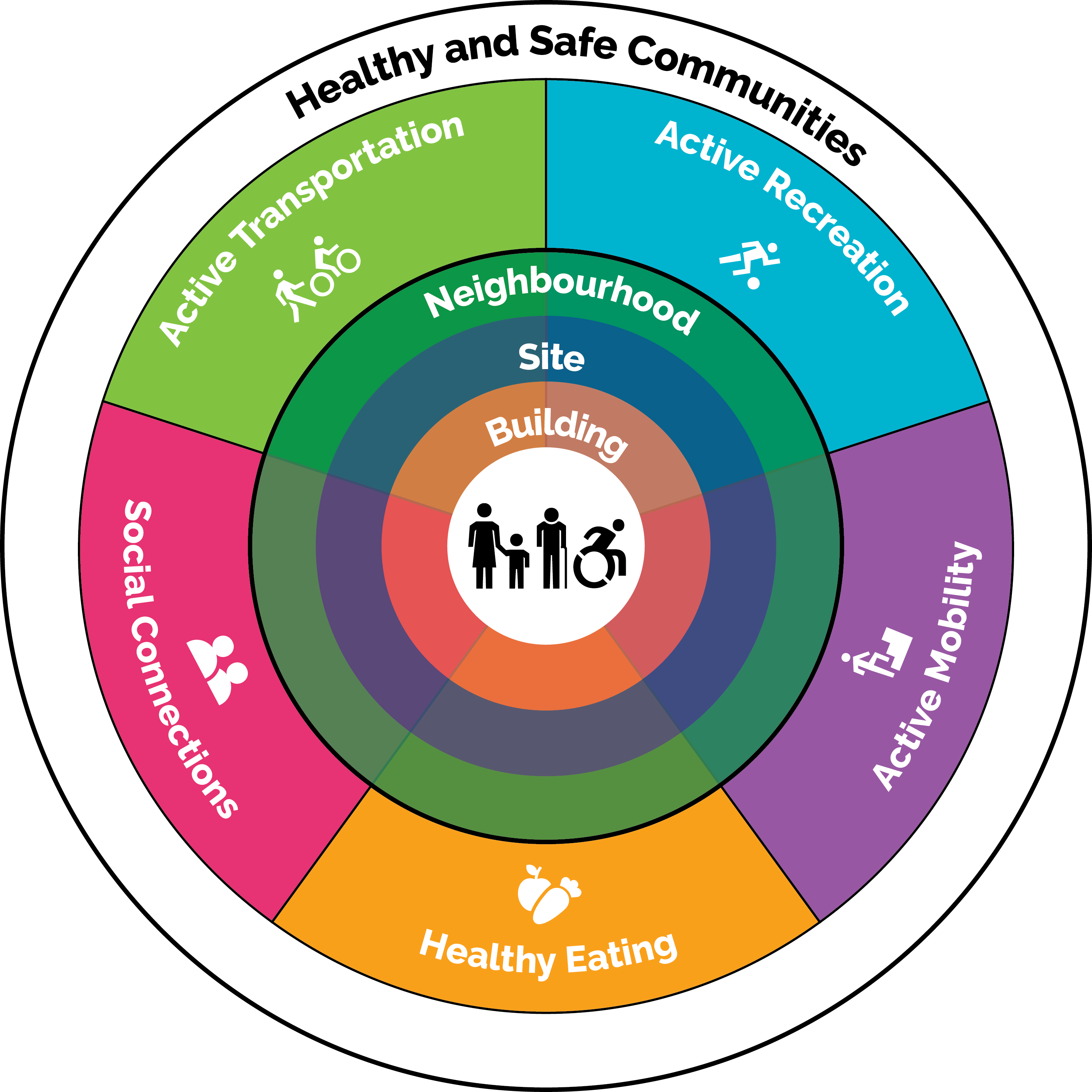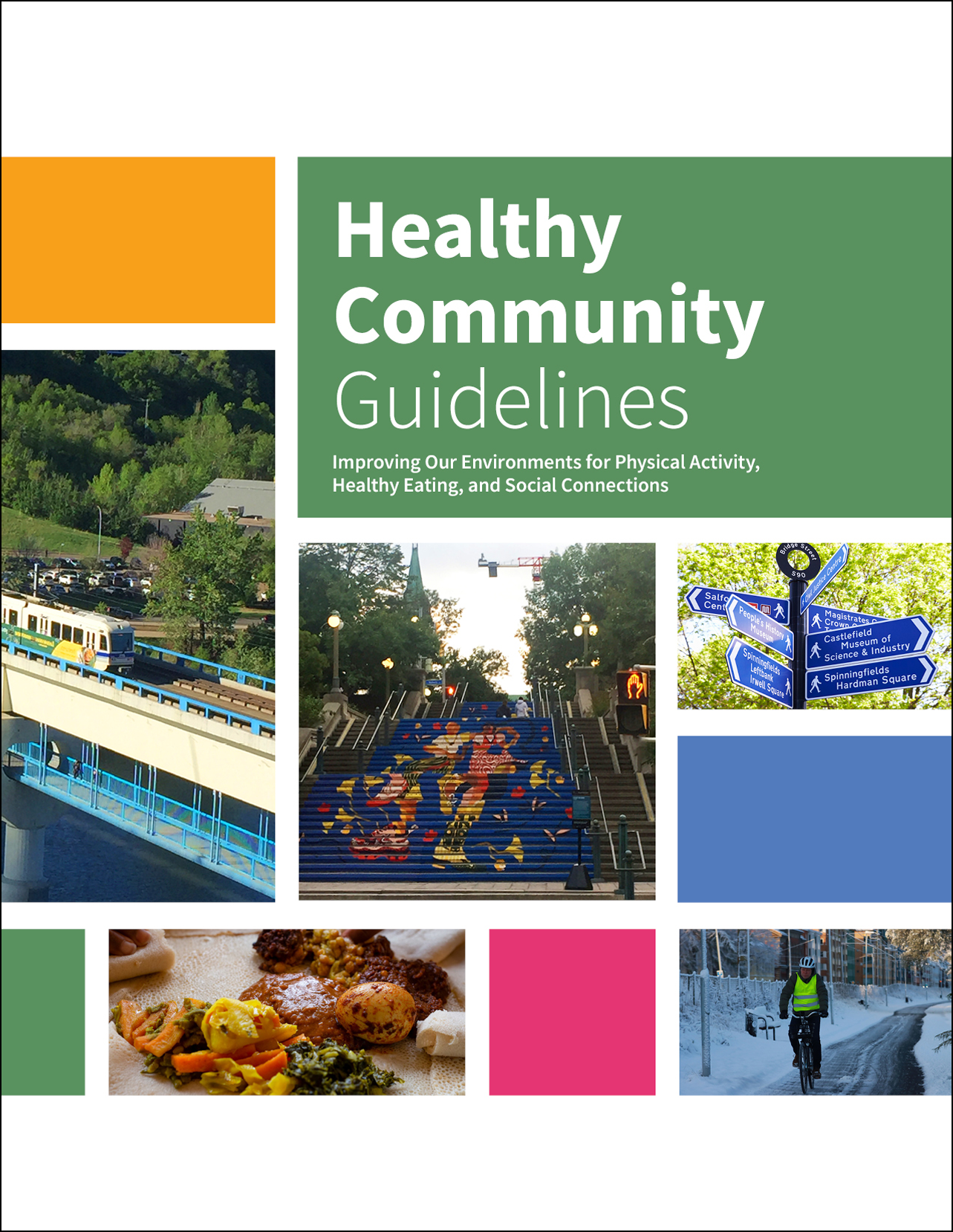Healthy Community Guidelines
To help us understand who is using the Healthy Community Guidelines (HCG), we would appreciate it if you could please answer a few questions: HCG Questions.
For a free e-copy of the Healthy Community Guidelines, please click here:
Download the Healthy Community Guidelines
Those interested in purchasing a hardcopy of the HCG can do so through the University of Alberta Bookstore.
For more information, please visit https://www.uab.ca/h4h.
Pour accéder à cette copie électronique gratuite des Lignes directrices pour une communauté en santéen français et en anglais, veuillez cliquer sur le lien suivant: Questions LDCS.
Pour obtenir une copie électronique gratuite des Lignes directrices pour une communauté en santé, veuillez cliquer ici :
Téléchargez les Lignes Directrices pour une communauté en santé
Les personnes intéressées à acheter une copie papier des LDCS (seulement en anglais) peuvent le faire via la librairie de l'Université de l'Alberta.
Pour plus d'informations, veuillez visiter https://www.uab.ca/h4h.
Created by University of Alberta Housing for Health working with 100+ multi-sector partners across Canadian provinces and the U.S., the Healthy Community Guidelines provide multi-sector audiences with strategies to create healthier cities, towns, communities, and buildings. A healthy community includes good planning, design and operations to minimize key risk factors and maximize protective factors for today’s leading causes of death, disease, poor quality of life, and healthcare costs, particularly Non-Communicable Diseases such as heart disease and strokes, diabetes, cancers, mental health issues, and injuries. Many of these chronic conditions are also risk factors for severe infections and deaths from infectious diseases such as COVID-19 and annual influenza.

Components of healthy cities/communities include:
- Physical activity, including active transportation, active recreation and active mobility
- Healthy eating/healthy food and beverage environments
- Social connections and inclusion
Target audiences include, but are not limited to:
- Planners
- Developers
- Home builders
- Urban designers
- Architects and landscape architects
- Interior designers
- Engineers
- Facility managers
- Health professionals
- Policymakers
- Residents involved in neighborhood planning and development
A Closer Look at the Healthy Community Guidelines:
These Guidelines supplement available frameworks by providing more specific evidence- and practice-informed strategies. Multi-sector professionals as well as community residents can use these strategies for improving their community environments to protect, promote, and maintain health and wellbeing. This list of practical strategies can be used to improve healthiness and safety of a variety of spaces, including neighbourhoods, streets, buildings and campuses and their amenities such as housing, shops, parks, leisure facilities, institutions like schools and care facilities, transportation systems, etc. The sections of the guidelines are divided into three scales: Neighbourhood, Site, and Building. Each scale contains strategies that can be implemented to improve our environments for three priority health-protecting factors today: physical activity (including active transportation, active recreation and active mobility), healthy eating/healthy food and beverage environments, and social connections and inclusion.
These Guidelines may also be incorporated into the policies of organizations, municipalities, and provincial and federal ministries (e.g. routine use of the Healthy Community Guidelines in all projects and RFPs).
